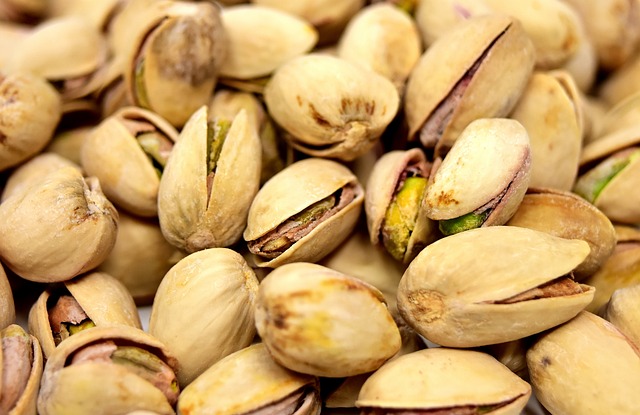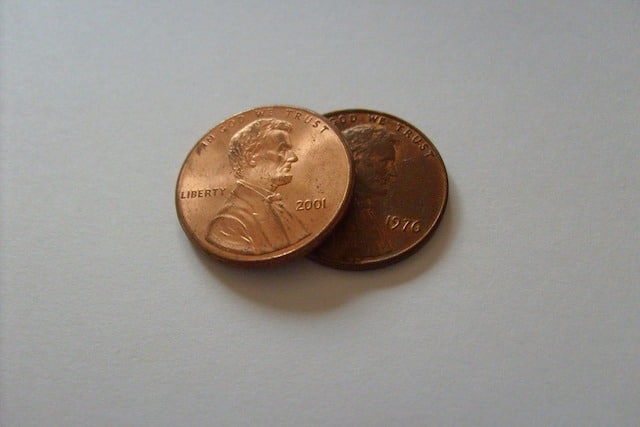10 Scary Chemical Reactions That Happen in Everyday Life
When you hear the phrase “chemical reaction,” chances are your mind jumps to beakers bubbling away in a science lab. But the truth is, the natural world is buzzing with chemical reactions every second—many of which we never notice. Some happen deep inside our own bodies, quietly keeping us alive. Others unfold in plain sight, hidden in everyday moments we rarely stop to think about. But don’t let the invisibility fool you—nature’s chemistry can be just as strange, powerful, and sometimes downright disgusting as anything in a lab. From the rotting of fruit to the way lightning breaks apart nitrogen in the air, chemical reactions are constantly shaping the world around us—often in ways that are far more bizarre than you might expect.
10. The Truth Behind the Pungent Pool Smell: Chlorine’s Reaction with Pee and More

Picture this: you’re walking towards a public pool, and as you get closer, that strong chlorine smell hits you like a wall. It’s so pungent it makes your eyes water and your nose wrinkle. You might think, “Wow, they must really be keeping this pool clean by using a ton of chlorine.” But here’s the unfortunate truth – that potent smell isn’t actually a sign of a super – clean pool.
Chlorine, on its own, doesn’t have that overwhelming, eye – stinging odor. It’s a highly reactive chemical. When it comes into contact with other substances, it can trigger some pretty intense chemical reactions. The smell you associate with public pools is the result of one such reaction.
This distinctive pool smell isn’t caused by chlorine directly. Instead, it’s due to chloramines. Chloramines form when chlorine combines with various compounds commonly found in and on swimmers’ bodies. These compounds include sweat, which is released during physical activity in the pool; oils from our skin; cosmetics like sunscreen or moisturizers that we might not fully rinse off before diving in; and, perhaps most shockingly, urine.
Many pools actually advise swimmers to take a quick shower before getting in. The reason for this is simple – to wash away as many of these compounds as possible from our skin. But let’s face it, not everyone follows this advice, and urine in the pool is a significant contributor to the formation of chloramines.
Here’s the ironic part: you might assume that a strong chlorine smell means the pool is extra clean because there’s more chlorine being used. In reality, the opposite is true. When chlorine reacts with sweat and urine, it breaks down into those smelly chloramines. And these chloramines are not effective at disinfecting the pool water.
9. How a Simple Art Project Turned Into a Chemical Horror Story

Art class is supposed to be a relaxing escape from equations and essays—a place where creativity flows and risks are low. But for one high school student, what started as a hands-on sculpture project spiraled into a nightmare fueled by a chemical reaction.
Back in 2007, a 16-year-old girl in the UK was attempting to cast a mold of her hands using plaster of Paris—a common art material with a dangerous side most people don’t know about. The assignment was to create a mold using clay, then pour in plaster to form the final shape. But a simple misunderstanding turned that process upside down. Instead of molding around her hands with clay, she plunged them directly into a bucket of mixed plaster.
What she didn’t know is that plaster of Paris isn’t just messy—it’s reactive. When water is added to this seemingly harmless white powder, it triggers an exothermic reaction, releasing heat as it solidifies. In her case, that heat soared to nearly 60°C (140°F)—enough to cause severe burns beneath the surface of her skin. The plaster hardened rapidly, locking her hands in place and making it nearly impossible to remove without injury.
By the time help arrived, the damage had already been done. Despite their efforts, doctors could not save most of her fingers. She lost all but two.
This tragic story is a haunting reminder that even everyday materials—especially those used in schools or DIY projects—can carry hidden dangers. Understanding the chemical properties of substances like plaster of Paris isn’t just trivia—it’s essential knowledge.
8. Adipocere: The Mysterious Waxy Substance in Coffins

When we ponder the fate of a buried corpse, the general understanding is that it will decompose over time, ultimately leaving behind just a skeleton. However, the journey from a living being to a skeletal remains is a complex and rather unsettling process with multiple stages.
At a certain point during decomposition, a unique substance called adipocere, commonly referred to as grave wax, can form. For adipocere to come into existence, specific conditions must be met within the coffin. A moist environment with very little oxygen is essential.
The formation of adipocere is a result of a chemical reaction. When the adipose, or fat tissue, in the body starts to break down, triglycerides undergo hydrolysis. This chemical process splits the triglycerides into glycerin and free fatty acids. Interestingly, this reaction is quite similar to the process used in soap – making.
As the adipocere forms, it initially has a waxy texture. But as time passes, it gradually crumbles. Despite its fragile appearance over time, adipocere can play a crucial role in the preservation of a body. It can help safeguard the remains for an extended period, sometimes for years.
7. Pistachios Can Spontaneously Combust—and It’s Not Just a Myth

They’re small, tasty, and packed with protein—but pistachios carry a fiery secret. Under the right conditions, pistachios can actually catch fire all by themselves.
That’s not an exaggeration or a strange food myth—it’s a legit chemical risk recognized in global shipping protocols. Because of their low moisture content and high fat concentration, pistachios are incredibly flammable. But the danger doesn’t stop there.
Even after harvest, pistachios stay chemically active. They continue to absorb oxygen from the air and release carbon dioxide. This ongoing metabolic activity, combined with the oxidation of fats, creates heat inside storage containers. And if that heat doesn’t dissipate—especially when pistachios are packed tightly by the ton—it builds up, and the fat effectively becomes fuel for a fire.
This isn’t a theoretical risk either. Entire shipping containers full of pistachios have been known to ignite without warning, which is why they’re on the list of spontaneously combustible goods in maritime safety regulations.
6. The Real Reason You Get Yellow Pit Stains—It’s Not Just Sweat

Think those yellow underarm stains on your white shirts are just caused by sweat? Think again. The truth is way more chemical—and surprisingly preventable.
Turns out, those infamous pit stains aren’t actually the result of sweating too much or not showering enough. They’re the result of a chemical reaction between your sweat and your deodorant—specifically, the aluminum-based compounds in many antiperspirants.
When aluminum salts from deodorant mix with the natural proteins in your sweat, they react to form a yellow compound. That compound soaks into your clothes, especially white fabric, and leaves behind a stain that regular washing often can’t remove.
Not everyone experiences this, but if you’ve noticed your white tees slowly turning yellow at the armpits, this is probably why.
The fix? Try switching to an aluminum-free deodorant. These products won’t stop sweat in its tracks the way antiperspirants do, but they can dramatically reduce staining—and are often a gentler choice for sensitive skin, too.
5. The “Lasagna Cell”: A Hidden Danger in Your Favorite Pasta Dish

Lasagna is a beloved food enjoyed by millions around the world. It’s not hard to see why – with its layers of pasta, rich sauce, and melted cheese, it’s a true comfort food. In fact, according to a survey, it’s the most – loved pasta dish among Millennials. But beneath its delicious exterior lies a secret danger that many of us are unaware of.
The trouble starts when you store lasagna in the wrong type of dish or cover it with the wrong kind of foil. Specifically, you should avoid using aluminum foil to cover your lasagna if you’re storing it in a metal dish (other than aluminum) or if you’re using aluminum foil in certain situations. Why? Because this can lead to a chemical reaction known as the “lasagna cell.”
A “lasagna cell” is essentially a mini – battery that forms when the conditions are right. The key ingredients for this reaction are present in your lasagna. The salty sauce acts as an electrolyte, which is a substance that allows electrically charged particles to move freely. This is crucial for the chemical reaction to take place.
When you cover your lasagna with aluminum foil and place it in a metal dish (not aluminum), the lasagna becomes a prime environment for galvanic corrosion. Galvanic corrosion occurs when two different metals come into contact in the presence of an electrolyte. In this case, the aluminum foil and the metal dish act as the two different metals.
The molecules of the aluminum foil act as an anode, which is the part of a battery where oxidation occurs. The metal dish, on the other hand, acts as a cathode, which is where reduction occurs. As the chemical reaction progresses, the aluminum in the foil starts to break down and tries to bond to the metal dish.
The results of this reaction can be quite noticeable. In as little as a few hours, you might start to see holes forming in the aluminum foil if you’ve stored your lasagna in the fridge. Additionally, you may notice tiny blobs of corroded aluminum on the surface of your lasagna. Not exactly what you want to see when you’re about to enjoy a meal.
4. Why Pennies Smell Weird—It’s Actually You

Ever picked up a handful of coins and caught that strange, almost metallic smell lingering on your fingers? It’s easy to assume that what you’re smelling is the metal itself. But here’s the twist: the smell isn’t coming from the pennies—it’s coming from you.
What you’re really experiencing is a bizarre but very real chemical reaction between the copper in the penny and the natural oils and sweat on your skin. When you touch coins—especially pennies, which are mostly made of copper—your skin starts to break down certain molecules. This reaction releases volatile organic compounds, some of which have a distinctive, sharp, sometimes unpleasant scent.
In fact, the same thing happens when you handle other metals like iron or brass. Your body’s unique chemistry interacts with the metal surface, creating a cocktail of molecules. What’s wild is that not everyone smells the same thing—these odors can vary based on your individual skin composition, diet, and even the weather.
3. The Surprising Similarity in the Smell of Beer, Weed, and Skunks: A Chemical Connection

Have you ever taken a sip of beer, only to be hit with an unpleasant odor that reminds you of a skunk? Or maybe you’ve come across some weed that has a distinctively skunky smell. Well, it turns out that there’s a fascinating chemical reason behind this similarity in scents.
Let’s start with beer. When beer goes bad, it often gets a skunky odor. This is not a rare occurrence; in fact, many beer drinkers have encountered this unpleasant experience. But why does this happen? The answer lies in a chemical reaction that takes place when beer is exposed to light.
Beer contains something called iso – alpha acids. These acids are released during the brewing process when hops are boiled. Iso – alpha acids are actually an essential part of what gives beer its characteristic bitter flavor. They add depth and complexity to the taste of the beer. However, light can be a real enemy to these acids. When light interacts with iso – alpha acids, it causes them to break down.
Once the iso – alpha acids are damaged by light, they start to bind with other compounds in the beer that contain sulfur. This is where things take a turn for the worse. The resulting compound is called 3 – methyl – 2 – butene – 1 – thiol, also known as prenythiol. This compound is what gives the beer that unmistakable skunky smell. It’s so potent that if the beer is exposed to enough light and the reaction is severe enough, the smell can be really off – putting.
But the story doesn’t end there. Interestingly, the same compound, prenythiol, can also be found in weed. Some types of weed have a particularly potent or skunky smell, and this is due to the presence of prenythiol.
2. You’re Polluting Your Home Without Even Realizing It

When we talk about air pollution, our minds usually jump to smokestacks, traffic, or factory fumes. It’s the outside air we worry about—the stuff filled with smog and exhaust. But what if we told you that the air inside your home—the space you probably think of as safe and clean—could be secretly polluted… by you?
Here’s the strange truth: humans are indoor polluters. Every time you sit on the couch, walk around, or just breathe, your skin is releasing compounds that interact with the air around you. This isn’t some abstract science fiction idea—it’s a very real chemical process happening in homes everywhere.
Your skin produces squalene, an oily substance that helps protect and moisturize. But when squalene meets ozone—yes, ozone can sneak inside from outdoors—it kicks off a reaction that forms something scientists call hydroxyl radicals. Outdoors, these radicals are natural cleaners, helping to break down pollutants. Indoors? Not so helpful.
In a confined space, hydroxyl radicals can react with other indoor substances—like paint, carpet fibers, or cleaning products—to create potentially harmful compounds. The result? A kind of invisible smog that you’re making without even knowing it.
What makes this even more fascinating (and kind of unsettling) is that this indoor pollution wasn’t studied in depth until the COVID-19 pandemic pushed researchers to focus more on indoor air quality. Now we know: our homes aren’t as clean as they feel, and part of that is because of us.
1. The Peculiar Effect of a Baby – Produced Chemical on Men and Women’s Aggression

Have you ever wondered if a simple smell could have the power to change your behavior? The concept of using pheromones to influence human actions isn’t exactly new. Even though scientific evidence supporting the idea that humans rely on pheromones in the same way some animals do is scarce, there is some proof that chemicals in body odor can impact human aggression.
Now, we’re not talking about the typical, rather unpleasant armpit odor. Instead, we’re focusing on a specific chemical produced by babies. This chemical is called hexadecanal, and it’s created in the heads of infants. You might have noticed people sniffing babies as if they were brand – new cars. Well, part of what they’re detecting is this very compound.
Research has uncovered some truly fascinating findings about hexadecanal. It has the ability to reduce aggression in men. On the other hand, it has the complete opposite effect on women, causing them to become more aggressive.
Scientists believe that this kind of reaction is a survival mechanism. When a baby’s smell makes the mother more aggressive, it could be an evolutionary adaptation. An aggressive mother is more likely to be protective of her child. She’ll be more alert to potential dangers and more willing to defend her baby from any threats.
Conversely, when fathers experience a decrease in aggression due to the baby’s smell, they become less of a threat. This might seem counterintuitive at first, but it actually makes sense from a survival perspective. A less aggressive father is less likely to accidentally harm the baby during interactions, and he can focus on providing support and protection in other ways.
Interestingly, this phenomenon isn’t unique to humans. Other mammals also exhibit similar reactions to various odors. For example, some female mammals become more aggressive when they detect the scent of their young, while males may show reduced aggression.

























